CBD Marketing: The Ultimate Guide to Overcome Restrictions
There are many restrictions when it comes to CBD marketing. The question is: How can you market your CBD business while being legal? Here’s what we’re covering in this guide: Read More...
The way to develop and launch a successful PR strategy has changed.
In this guide, you’re going to learn how strategic PR can help your business grow in 2021.
More specifically, here are some of the questions we’re answering:
We’ve got a lot to cover, so let’s get started.
A PR strategy is aimed at improving your brand’s image.
It is the collection of all actions taken in order to get publicity and coverage of your brand on relevant media outlets, industry publications, podcasts, as well as blog and social media posts, and reach both your short-term and long-term PR goals.
In a sense, it is quite similar to a marketing strategy since it is all about spreading a message about your brand, but without the business goals that necessarily involve sales.
In most situations, a public relations strategy is used to spread the word about your business, services, or products to improve their recognition and maintain positive relationships with your audience and stakeholders.
But it has another use: crisis management.
Mending a situation in which your brand’s image has suffered an impact.
An example of such a crisis would be a data leak, or an employee doing something illegal or shady.
There are three types of media channels, useful for managing public relations: owned, paid, and earned.
Of course, the first place to talk about yourself would be your own resource.
Your blog, landing pages, YouTube channel, LinkedIn and other social media groups are where you should focus on first.
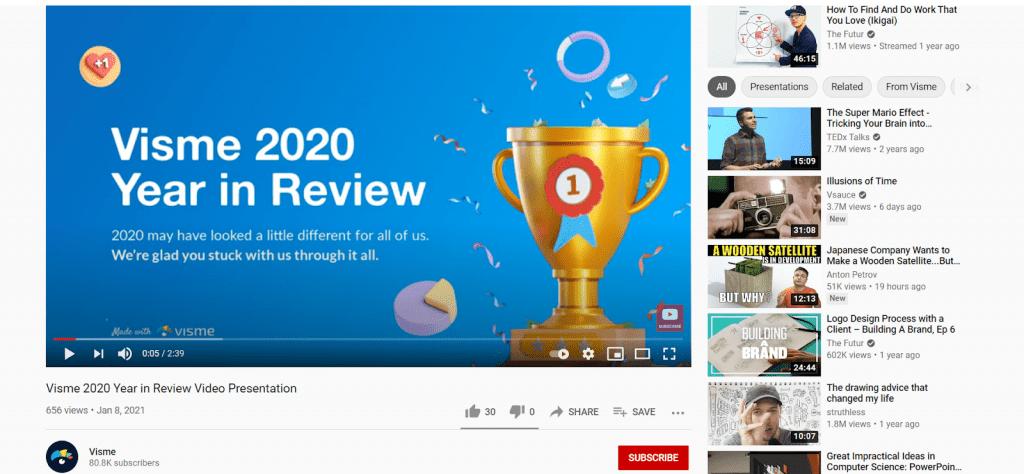

This is the easiest channel to manage since you have total control over it.
It is also the most important because, well, in order to be viewed as a trustworthy brand, you have to present yourself accordingly.
Also, 99% of your brand’s mentions will link to one of your owned media pieces, so it might be your only chance to impress them.
That’s why every single of your owned media posts should be top-notch.
This includes everything you paid for to get exposure. PPC, paid advertisements, sponsored posts, influencers, etc.


And even though people generally don’t like advertisements, this is the most sure-fire way to get them to notice you.
Earned media coverage is the hardest to get, but it is also probably the one that matters the most.
Thought leaders’ and bloggers’ reviews, mentions, contests, shares, word of mouth recommendations, and even high Google rankings are all considered earned media.
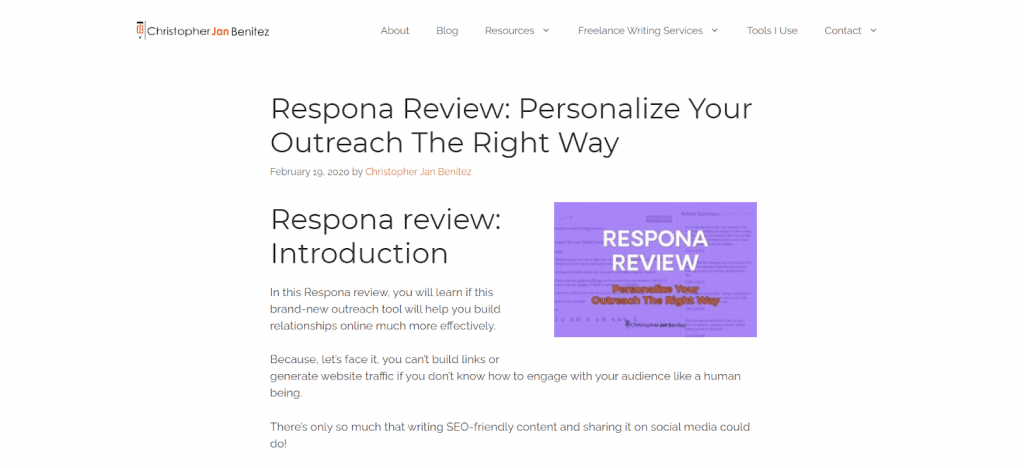

A healthy PR strategy makes use of all three types of media channels.
If you only focus on owned media, you will struggle to gain any traction whatsoever. Investing all of your resources into paid media will drive people to your site, but they will be unlikely to stay and browse your content/products because it’s underdeveloped.
Without strong content of your own it will also be extremely difficult to rank high in Google or to get other bloggers to link to you simply because there’s nothing link-worthy.
So, all three channels synergize and work together to get you closer to your ultimate goal: get exposure.
There is no set condition when you can look at your business and say “Now, it is time to develop a PR strategy.
In fact, every brand needs a public and media relations strategy developed as soon as possible.
Without any kind of promotion, you can not expect people to start talking about you.
You might have the best product in the whole wide world, and still be unknown to the masses.
It is impossible to oversell the importance of a PR strategy.
But the argument that you will fail to gain any kind of attention without public relations is awfully vague.
So, let’s dissect some concrete goals that a PR strategy will help you achieve. Starting with the most obvious one:
I already mentioned it, but first and foremost, public relations serve as a tool for boosting your brand’s awareness.
The more people know about you, the better it is for you.
That, of course, applies to good PR.
But, as some celebrities say, any PR is good PR, so even if some kind of controversy sparks around your company, you can take advantage of the increased publicity and turn the tables around completely.
Speaking of bad publicity, a solid PR campaign is what will help you recover your image should something bad happen to it.
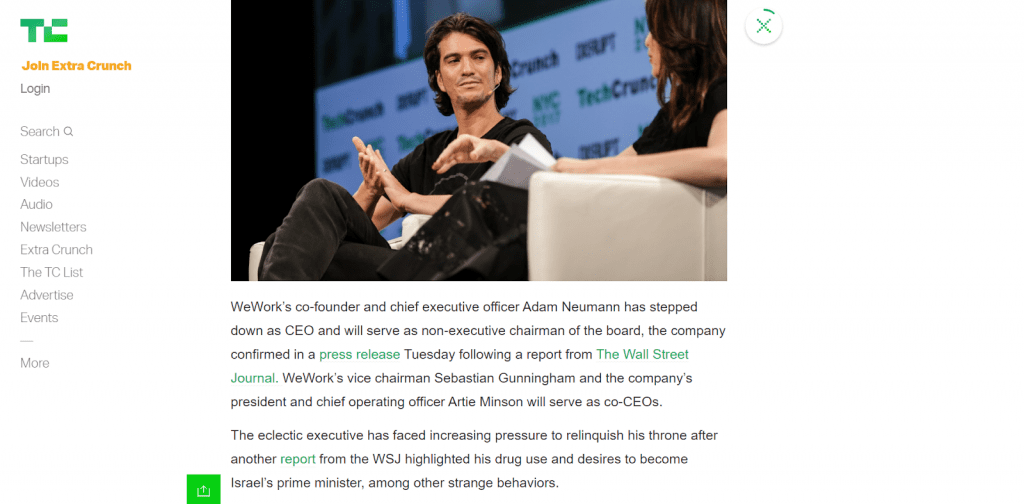

Public relations are essential to managing a crisis since without you addressing the issue, the last thing your audience will remember about you is the negative event that caused it.
And that can mean the end to your brand. In a sense, it is the life vest that will keep your business afloat even if the current may feel overwhelming.
One of a PR strategy’s goals is to help you establish a solid brand identity and use messaging that reflects your company’s value.
Once people start associating you with your product/service (just like when people say “Let me Google something” instead of “let me use a search engine to look for something”), that is a good indicator of amazing branding.
A good PR strategy will also help establish stronger bonds with your existing customers (as well as attract new ones), which is perfect for reducing churn.
And even though the purpose of PR isn’t focused on generating revenue (that’s the job of marketing), a good public relations strategy definitely helps generate more leads.
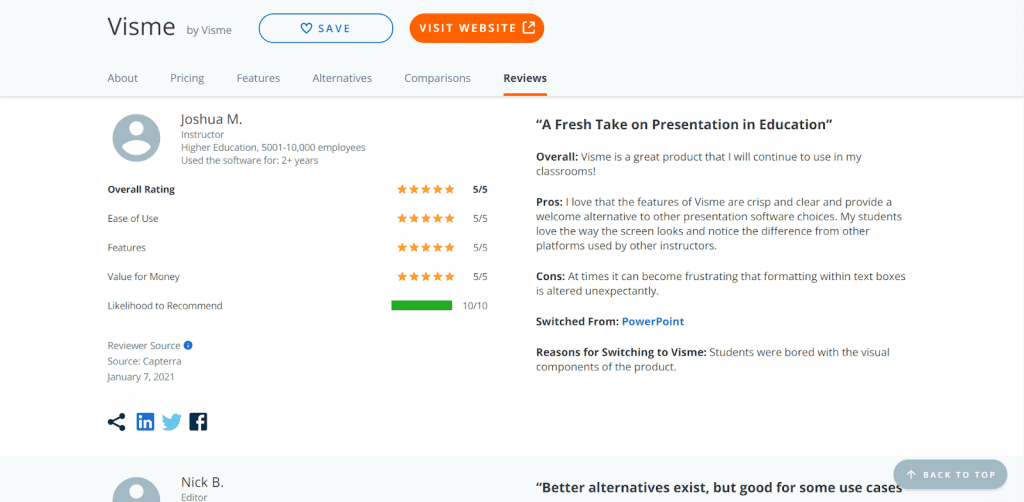

Since you’ll be getting your product in front of more people, naturally, more people will be interested in buying it, or at least trying it out.
Whenever investors see a business that has all the potential to conquer the market, they see an opportunity.
And an opportunity is exactly what you want to look like to them.
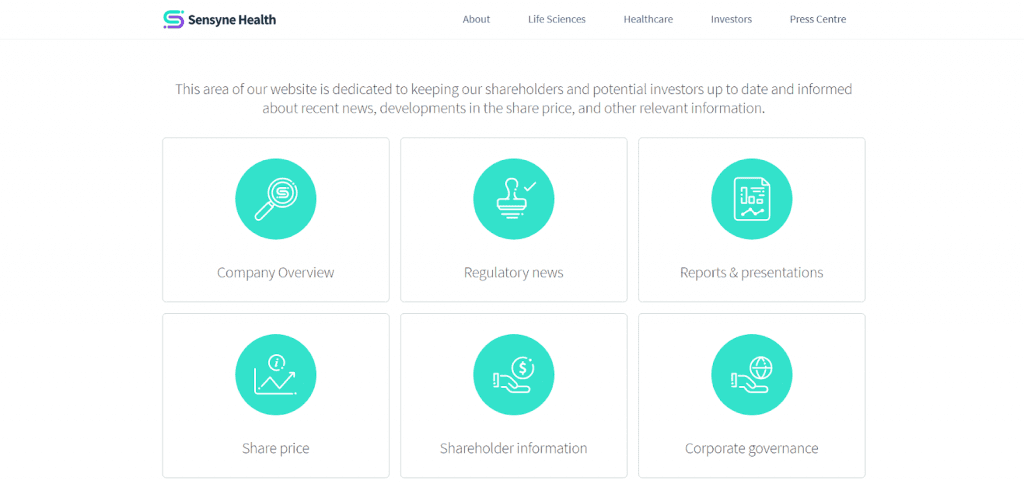

They will, in turn, help you develop your brand even further, increasing your credibility and entrenching your position on the market.
If you position yourself as a powerful, trustworthy brand, in addition to customers and investors, your PR strategy will also serve to attract new talent to your office.
And, as your business grows, so do its requirements, and at some point you will need to expand your team.
A good PR strategy practically takes care of that need automatically, saving you the trouble of running a separate hiring campaign.
They will come to you by themselves!
So, a PR strategy helps your business grow in all possible ways, from generating more leads to attracting investors and even employees.
Without a good strategy you will practically be running your business in the dark, and without promoting it in some way, all of your efforts will be practically wasted.
So, now we have established the importance of a public relations strategy for your business.
Now, let’s take a look at an example of great PR.
Being one of the largest, most successful companies to have ever existed, Apple has completely mastered the art of public relations and gained absolute thought leadership.
In fact, they let their customers do it for them.
After all, people are much more likely to purchase a product that their friends have recommended to them rather than one they saw in a pompous ad.
But how do they do it?
Well, of course, their reputation plays a considerable role, but there is a little PR trick they use every time they release a new product.


Apple is also the master of trailers and teasers.
Even if you’re more of an Android person, their iPhone 12 trailer probably still hyped you up.
Besides, of course, the obvious production value of the whole thing, Apple included some pretty exciting details about the smartphone, including the fact that it uses the fastest mobile chip in the world, films in 4K, and is considerably more drop-resistant.
But, they didn’t actually mention when the iPhone was going to come out, and how much it was going to cost, leaving the audience talking about how cool it’s going to be and how much they hope it’s not going to take too long until release.
Luckily for the excited fans, iPhone 12 released only 10 days after this trailer.
What they didn’t realize, though, was that by telling their friends and family about it, they were essentially part of Apple’s PR efforts.
This is how Apple handles PR for new releases—tease the audience with exciting little videos that don’t reveal too much (just the key messages), let them build up the hype, and only after that delve into a full-blown marketing campaign.
But, of course, a trailer was far from the only PR move Apple did preparing for the launch of iPhone 12.
The same day as the trailer I mentioned above, they also published a full-on press release on their own Newsroom, which attracted the attention of countless other media outlets, reviewers, and influencers.
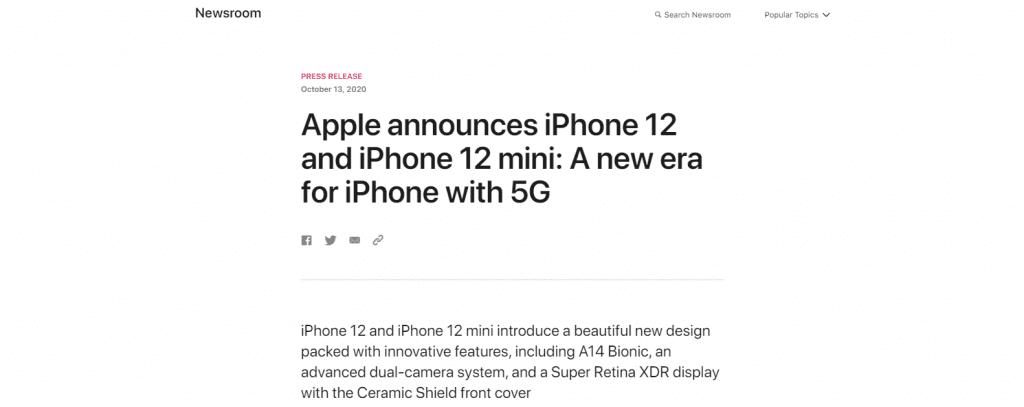

Just with these two tactics, the company managed to utilize every type of media:
Owned, paid, and earned.
Simply brilliant.
But, unfortunately, maintaining effective public relations for a smaller company (especially when it comes to startup PR) is a matter of many more PR activities than just videos and press release distribution.
The good news is, though, that it’s very much possible, and I will tell you exactly how to do it.
Actually, there are two ways to create a PR strategy.
The first would be hiring a PR agency to do it for you.
Sure, it is much easier and a lot more convenient, but it has some considerable downsides.
The first one, of course, is that hiring an agency is quite expensive, especially if your budget is tight.
The not-so-obvious disadvantage of having a PR firm develop a strategy for you is the fact that you won’t be learning anything from it.
And there’s nothing more valuable for your business than first-hand knowledge and experience, which you can only gain by handling PR yourself.
So, the process we’re going to present makes sense only if you choose to do PR in-house.
So, let’s take a look at the 5-step process of building a PR strategy with our own public relations tool, Respona.
If you’re familiar with PR or marketing, you already know that the first step to any kind of campaign would be to define your target audience, and find prospects.
Respona makes it very easy to do.
It has a built-in search engine, which allows you to easily find other resources, blogs, news articles, influencers, and even podcasts (that you can come on as a guest) with the right audience demographics for your purposes.
First thing you’ll need to do is set up a new campaign:
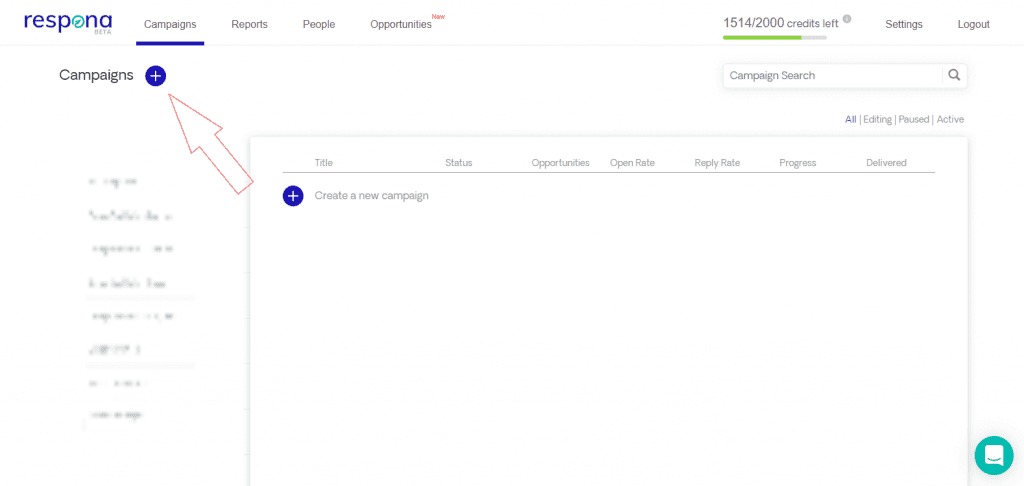

To do that, just click on the plus sign next to Campaigns.
You will then be taken to a screen prompting you to name it and choose the email address that your messages will be sent out from.
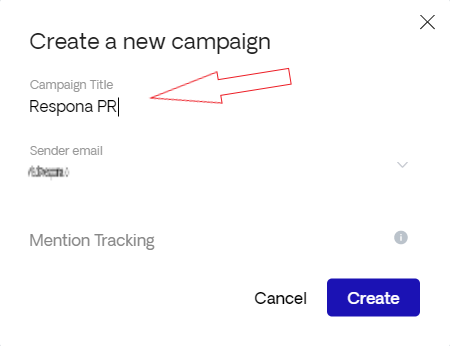

As an example, let’s imagine that I ran a PR campaign for Respona to let people know about how it can be helpful for link builders.
After you’ve named it, you will need to choose between a search or import-based campaign.


An import-based campaign would be useful for when you’re extracting backlinks from your competitor’s sites as a .CSV file in order to reach out to them with your pitch.
The only difference between a search and import-based campaign is the first step:
For the former you will be using Respona’s search engine to find opportunities, while for the latter you just need to upload your .CSV file with extracted links.
Let’s see how the search engine works.
It’s based on Bing, so the results you see might differ a little bit from what you would find with a Google search.


The search bar gives you quite a few options. Firstly, you can choose what exactly you’re looking for: influencers, news, trending content, podcasts, or just running a generic web search.
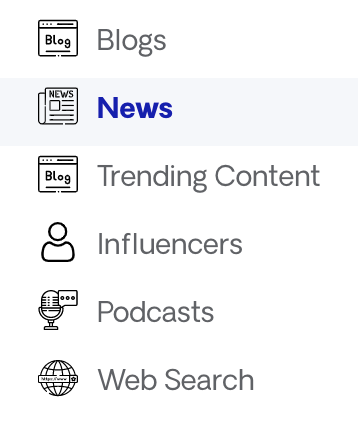

It also has a variety of filters including the number of backlinks, freshness, domain authority, and more.
For our purposes, let’s set the freshness filter to the past 6 month so that all the results are relevant.
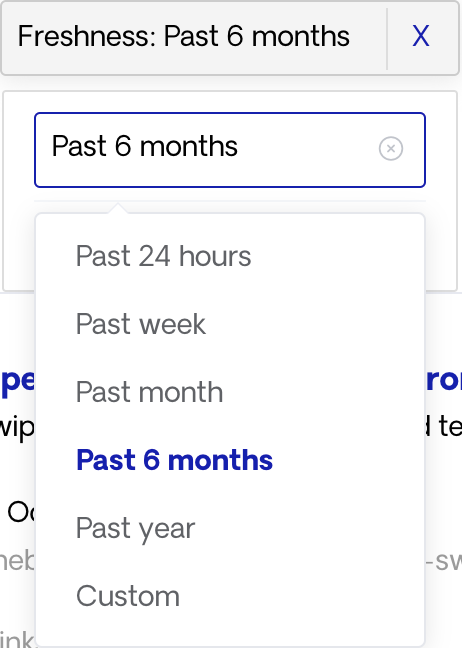

Type your keywords in the search bar. The way I set the search up, Respona will find all news articles and case studies from the past 6 months that mention link building tools.
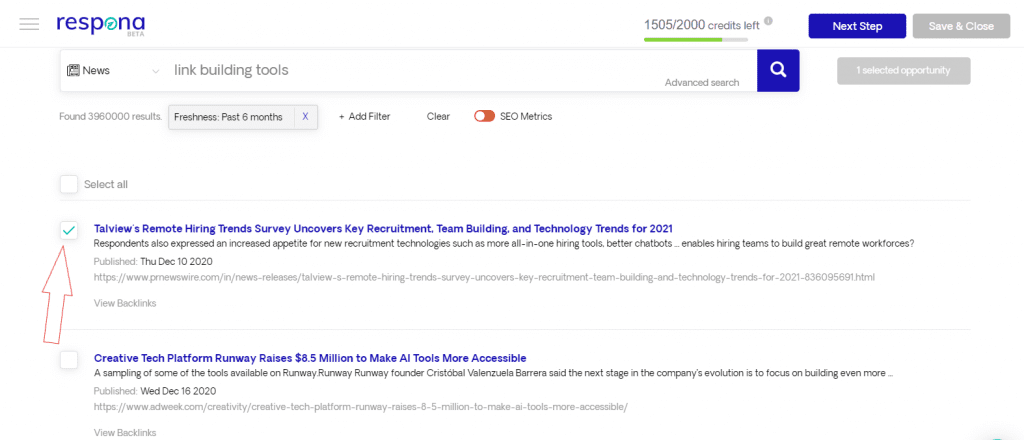

To select an opportunity and add it to your prospect list, simply tick the box to the left of their title.
These are the people you will be reaching out to with your PR pitch. There is no set amount of prospects for a successful PR campaign, so choose as many as you feel you need.
But also keep in mind that more prospects means more replies and more opportunities to get your brand in front of people.
I’ve shown you how to look for news articles. But “Top x” blog posts and podcasts are amazing opportunities to gain exposure as well.
To find listicles, simply pick “Blogs” from the drop-down menu on the left side of the search bar, and enter “best link building tools”, for example.
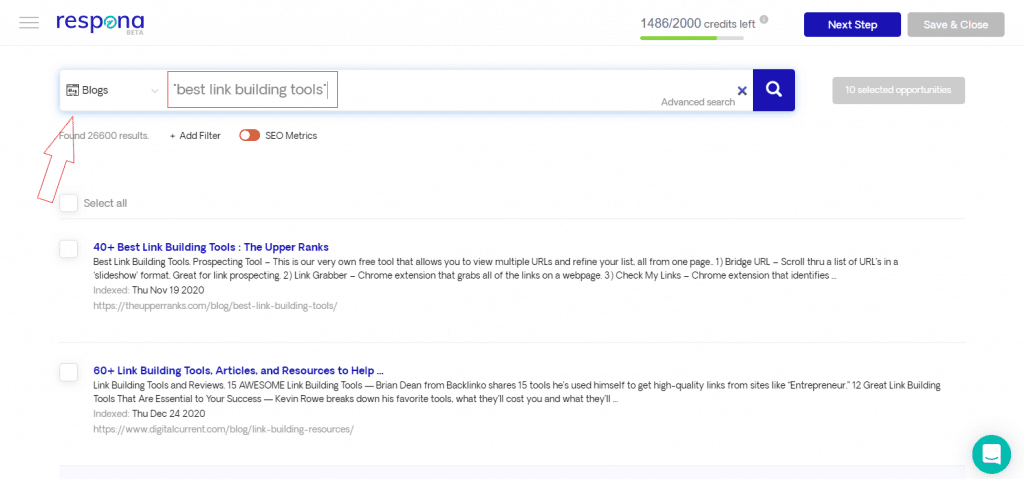

Finding podcasts is equally as simple. Pick “Podcasts” from the drop-down menu on the left , “shows” from the one on the right, and enter your keyword. Respona will reveal the list of all podcasts, relevant to link building and SEO.
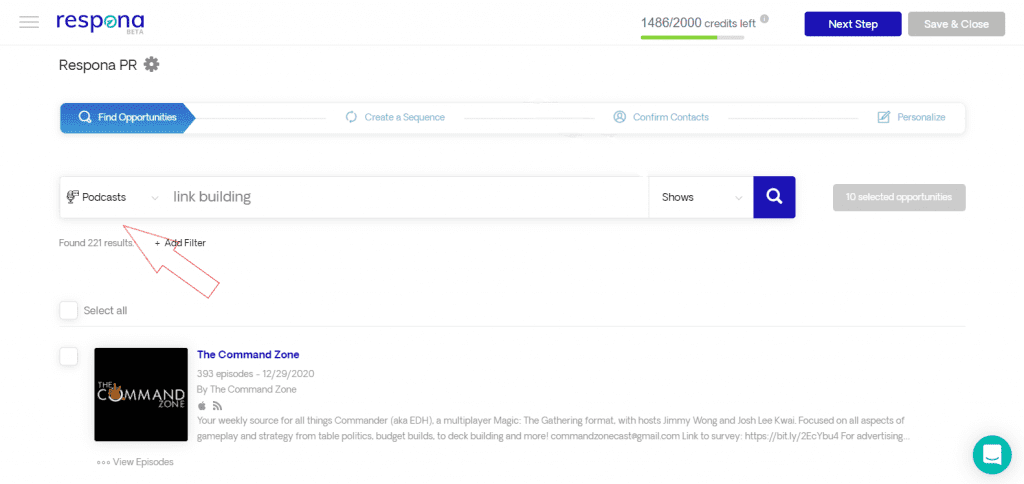

There’s also a way to find podcasts that your competitors have appeared on. Why would that be useful to you? Because if someone from your niche has already appeared on the show, your chances of getting on it grow as well.
To do that, simply select “Episodes” from the right drop-down menu, and enter in your competing company’s name, or its CEO.
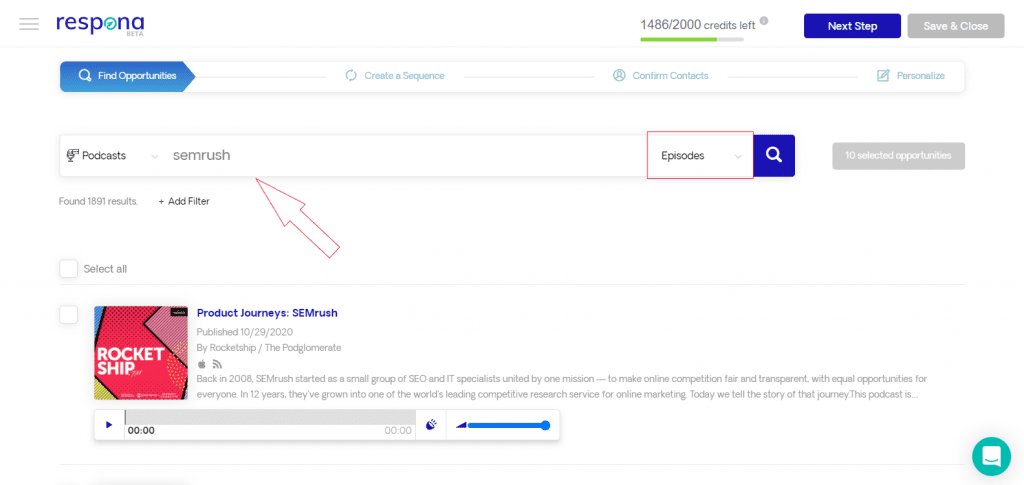

For this tactic, you will need Ahrefs. Essentially, you will be looking at your competitors’ backlinks, extracting them into a .CSV file and importing the articles that have linked to your competition into Respona to reach out.
First, log into Ahrefs and enter in your competitor’s URL. Let’s do SEMRush, for example.
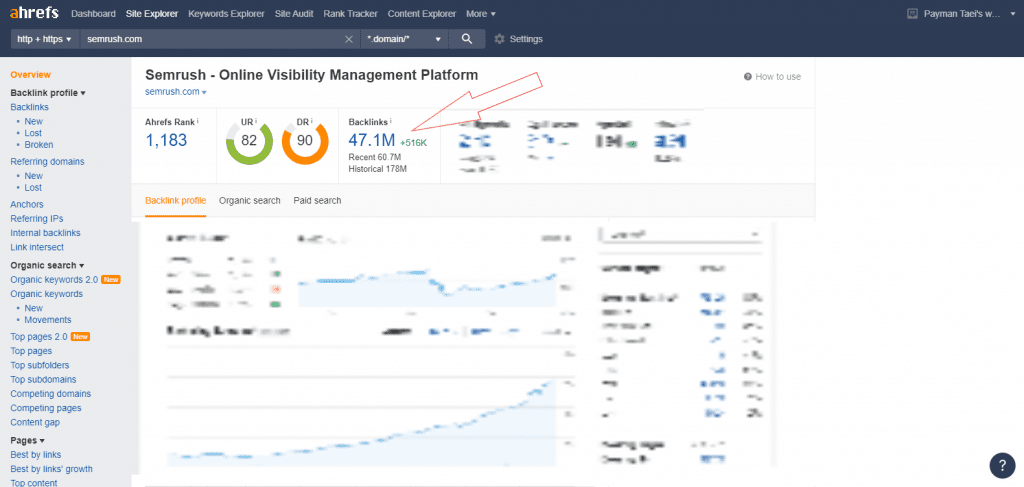

The only thing important for us right now is the “Backlinks” section. If you click on it, Ahrefs will reveal every single link that leads to your competitor’s URL.
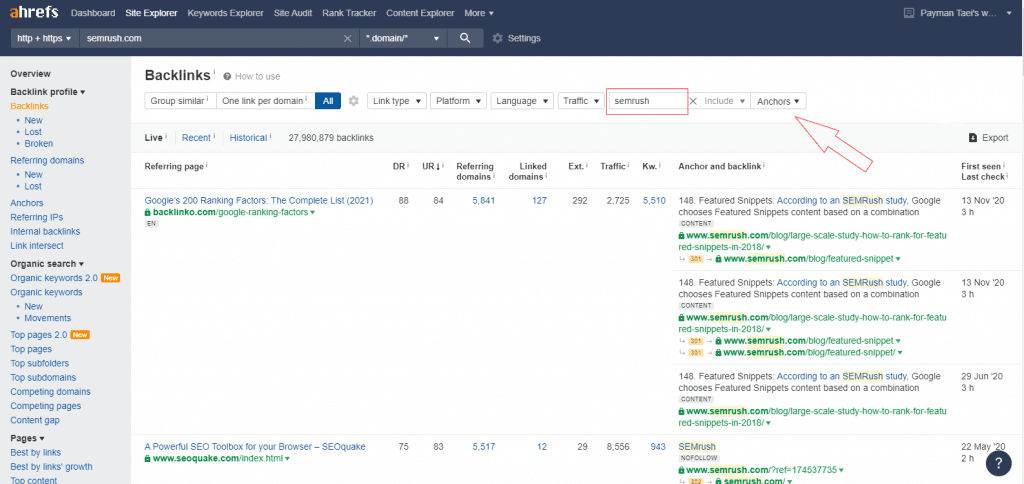

To make sure you’re only getting links that mention your competitor in the anchor text, select “Anchors” from the drop-down menu and type in their company in the field.
Now, export the .CSV file.
Before importing it into Respona, you will have to clean it up, removing any irrelevant information, such as domain ratings, and your competitor’s links.
Here’s what it should look like after you clean it up: just the URL of the page that links to your competitor, and its title.


To import it into Respona, create a new import-based campaign.
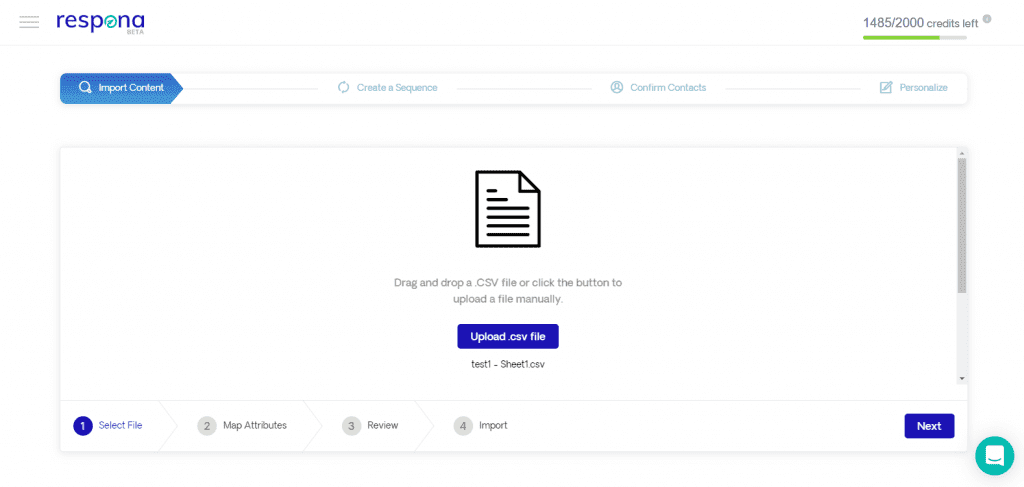

Upload your CSV file, and map attribute fields so that they match up.


Since you only have two columns, it’s as easy as selecting “URL” for the column with your site’s URL, and “URL Title” for the column with, well, its title.
Hit “Next”, and the import will be complete. The following steps will be the same, regardless of the type of your campaign (podcasts, blogs, news articles, imported backlinks, etc.)
Now, it is time to craft your email pitch. Respona has quite a few templates built into it, but we will be creating a new sequence specifically for PR outreach.
Switch over to Personal Templates, and click on “Create New”.
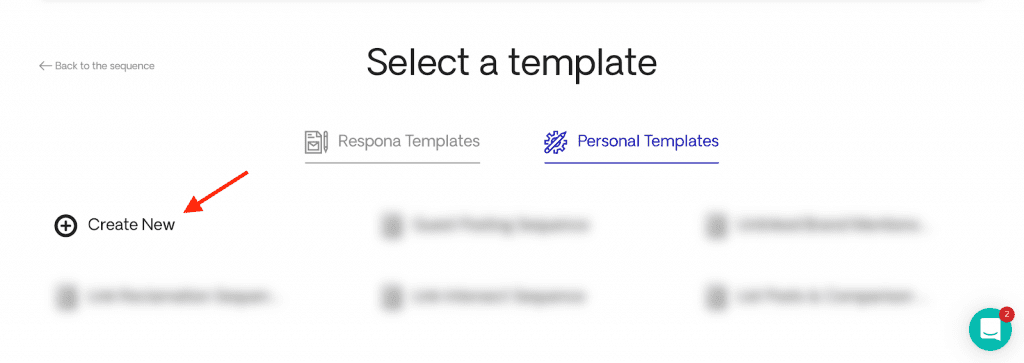

First, name your sequence.
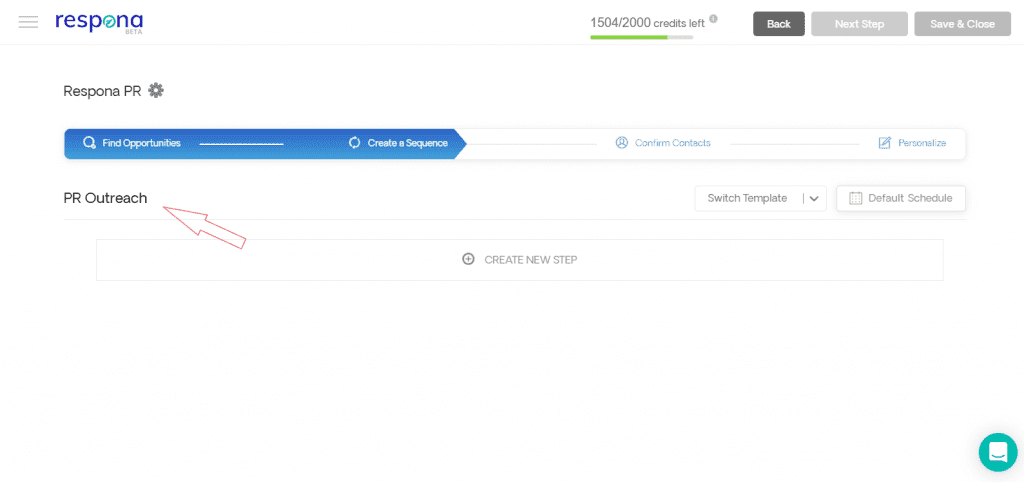

To make the most out of your template, try to make it as re-usable as you possibly can.
And even though there are no be-all-end-all tactics for writing an email that gets opened 100% of the time, there are definitely a few things that can improve your chances.
Here’s the email I’ve created for the purposes of this campaign:
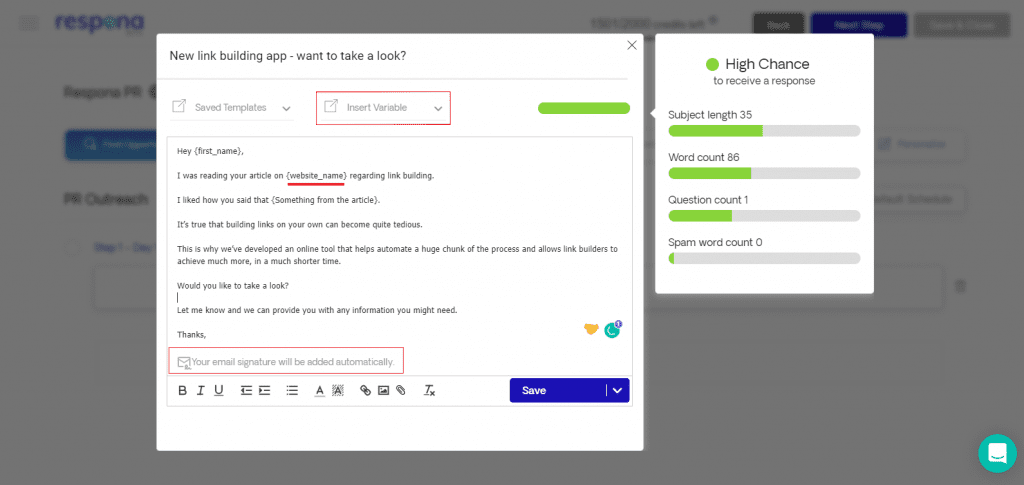

As you can see, I’ve used quite a few variables in it (the weird code in brackets).
Variables adjust to each opportunity in the campaign, so you can spend less time on the personalization stage.
So, for example, the {website_name} variable will insert the name of your prospects’ websites for each individual pitch.
You can add more variables by clicking on the “Insert Variable” drop-down.
Here’s the full template for you to grab and use during your own campaigns:


Subject
Hey {first_name},
I was reading your article on {website_name} regarding link building.
I liked how you said that {Something from the article}.
It’s true that building links on your own can become quite tedious.
This is why we’ve developed an online tool that helps automate a huge chunk of the process and allows link builders to achieve much more, in a much shorter time.
Would you like to take a look?
Let me know and we can provide you with any information you might need.
Thanks,
{email_signature}
Respona also rates your pitch and approximates your chances of getting a response. It does so by checking your subject length, word count, number of questions, and, of course, scans it for spam words.
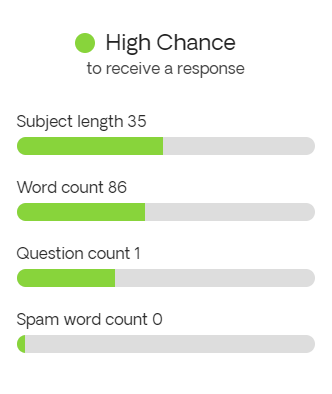

Once you’ve written your initial message, hit Save.
Don’t get discouraged if you don’t get too many responses right away.
In fact, Respona can send out automatic follow-ups if your prospects don’t reply, so let’s set it up.
To add a follow-up message, press “Create New Step” again.
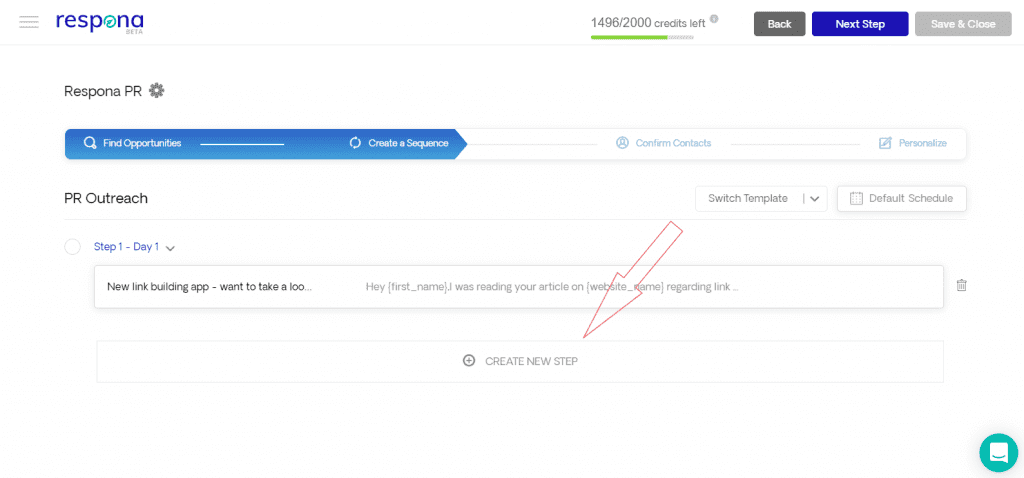

You can add as many follow-ups as you want, but I advise sticking to one or two.
Stay mindful of their time, and if your prospect hasn’t responded to three of your emails, chances are, they are not interested anyway.
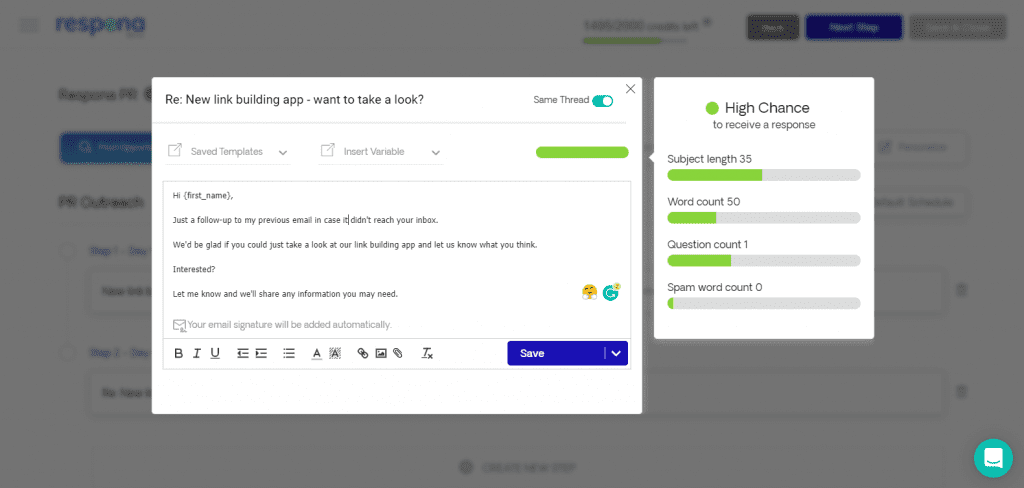

You can also set the delay between each email. Let’s set it for 5 days for this sequence.
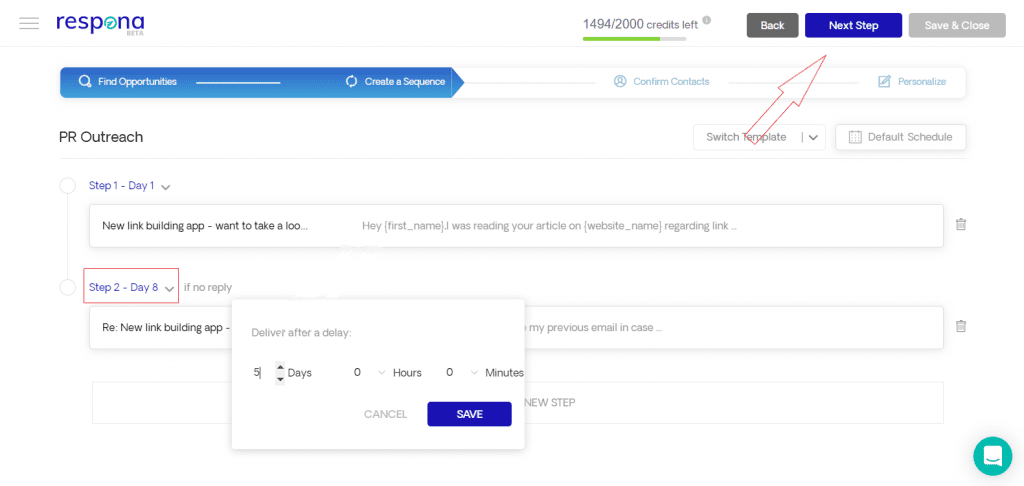

Once you’ve set up your initial email and follow-ups, you can move on to the next step.
Respona actually has a built-in email finder, so you no longer need to use other tools like Hunter. It’s pretty straightforward, and the process is highly automated.
All you need to do is set it up, and review the addresses that it found for you.
At this stage, you are presented with a variety of functions, so let’s go through them all to clear things out.
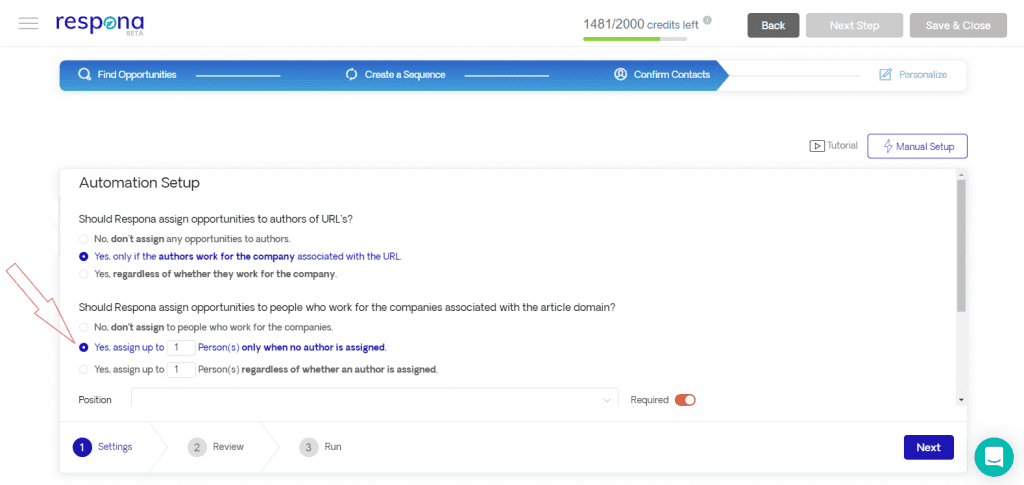

The first one is pretty straightforward:
Should Respona assign opportunities to authors of URLs?
Let’s keep it at yes, but only if they work for the company associated with the URL.
This tells Respona to assign the author of the article that you chose in step 1 (if you went with a news or blog post search) to the opportunity.
The second one is useful for situations where the writer of that content couldn’t be found. I set it to yes, assigned to 1 person only when no author is assigned.
This tells Respona to pick 1 person per opportunity, only in a situation where an author could not be found.


The position and seniority fields allow you to tweak which members of the team Respona should be looking for. In the screenshot, I have entered “editor”, and “content”, as well as “manager” and “director”.
This configuration will help you get a hold of someone who can actually help you get PR coverage, but depending on your needs, you can search for any position of any level of seniority.
The “required” toggle next to each field means Respona will assign only editors and people responsible for content, either managers or directors.
There are also three advanced settings.


If turned on, the first two will assign either a generic catch-all (hello@domain.com, info@domain.com, etc.) address if Respona can’t find a person that meets your search criteria, or their valid email address.
Let’s switch the last option off because it wouldn’t make sense to bother people’s personal inboxes with PR pitches.
Once you’re done setting your criteria, hit Next.
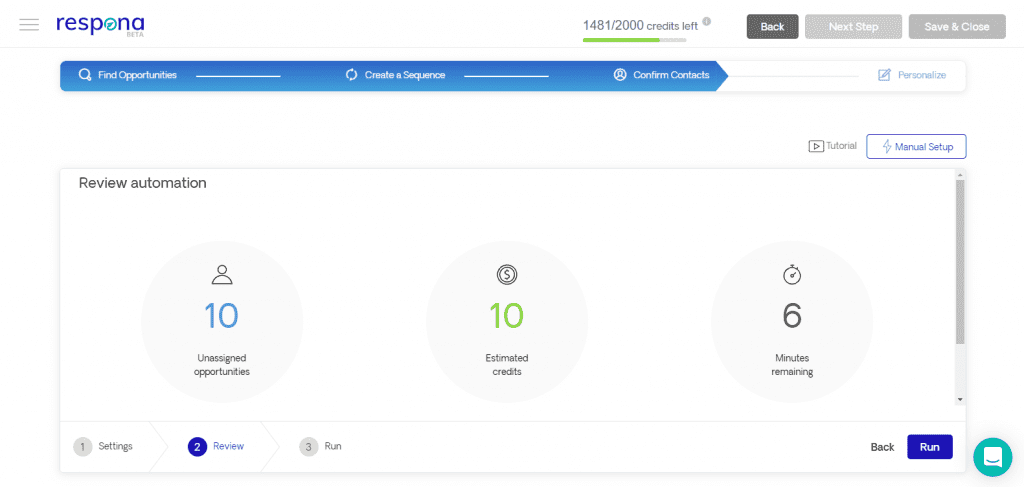

Now, the automation is good to start.
Hit Run, and wait for a few minutes.
You can even close your browser or switch your computer off entirely, since Respona is fully cloud-based and will run regardless.
Once it’s done, you will need to review the results.
Respona will assign the right email about 9 times out of ten, so let’s look at two situations: when it found the correct one, and when it didn’t.
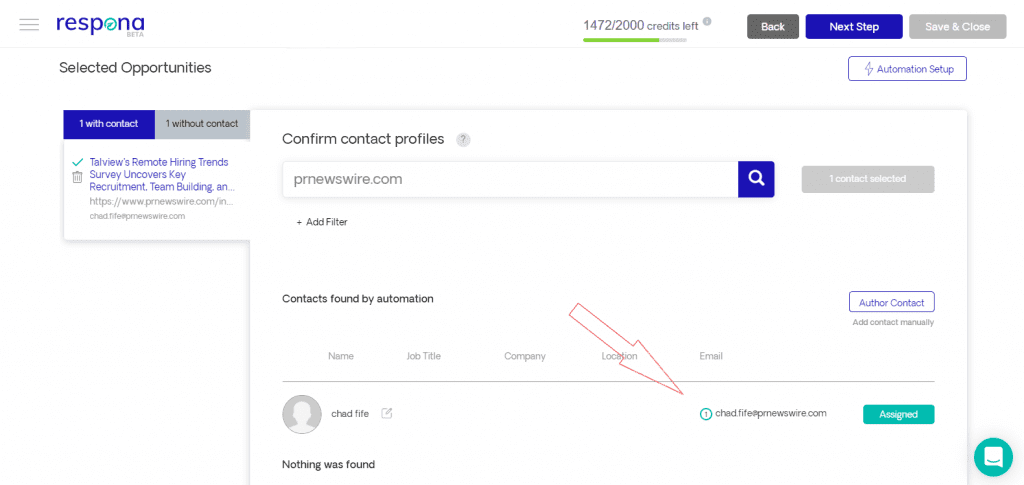

On this screenshot, Respona has assigned the author of an article I chose in stage 1.
The green circle near it means it’s a verified address.
In this case, I don’t have to do anything about it and can move on to the last step.
If you click over to the “Without Contact” contact tab, you will find all of the opportunities that Respona has failed to assign a contact address.
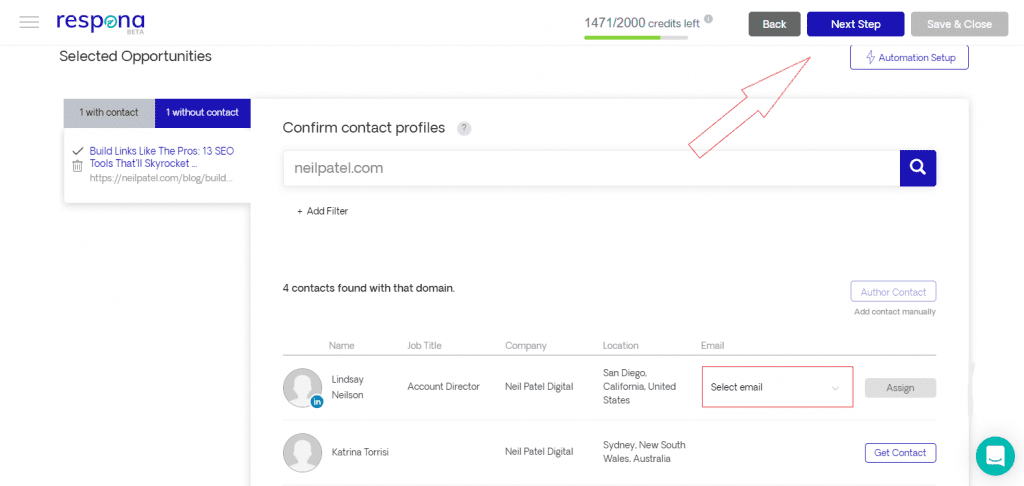

Here, you can see all of the people associated with that domain.
Choose the person who you think fits for what you’re trying to achieve, and press “Get Contact”.
Respona will run a short individual scan and reveal all of their emails.
Choose one from the “Select email” drop-down.
Alternatively, you can use the search bar above to re-scan a specific domain or look for a specific person’s contact address, if you know their name.
When you have assigned addresses to all opportunities, you can move on to the next step.
Now, it’s time to personalize your pitch for every single opportunity.
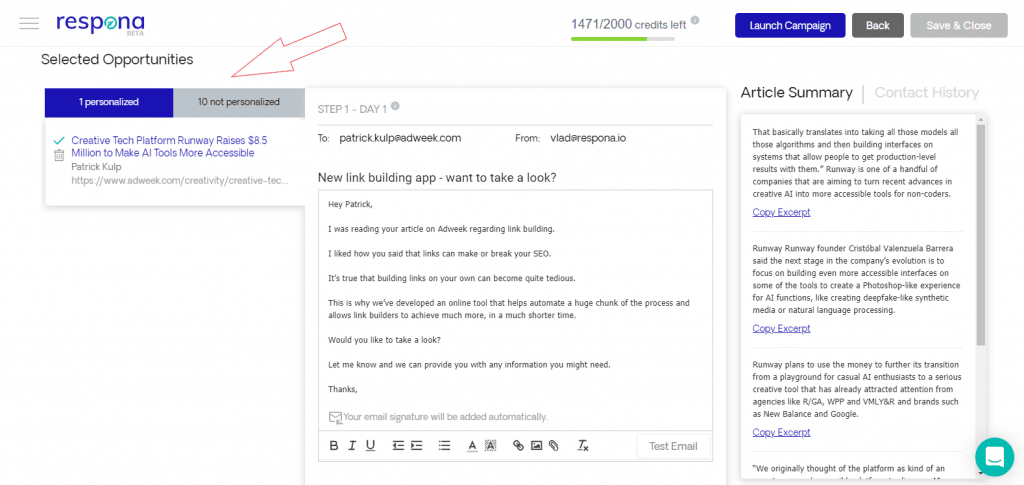

If you’ve used any variables when creating your sequence, they will all be automatically replaced with the appropriate information (names, domains, URLs, titles, days of the week, etc.).
Every pitch that hasn’t been personalized yet will be found in the “Not Personalized” tab, and as soon as you make any edits it will be moved to “Personalized”.
Try to customize every message as much as you can, add in references to their content, comment on their articles, and show genuine interest in their work.
This will increase your chances of getting replies quite considerably.
On the right side of the screen, you will also find short excerpts from your prospect’s content so that it’s even easier to find something to mention.
When you’ve personalized every single pitch, you can launch your campaign.
This is just an example of how to run a PR strategy, and, of course, there are countless other ways of going about it.
But, the entirety of it can be done within a single tool, Respona, which makes it extremely simple and cost-efficient.
Of course, public relations is a long process, and to make the most out of it, you need to keep track of your KPIs (key performance indicators), and adjust your strategy depending on what works for you and what doesn’t.
For this example campaign, some useful metrics would be:
Conveniently, these are easily measurable inside of Respona. You will find them if you go to the “Stats” tab of any campaign that you’ve already launched.
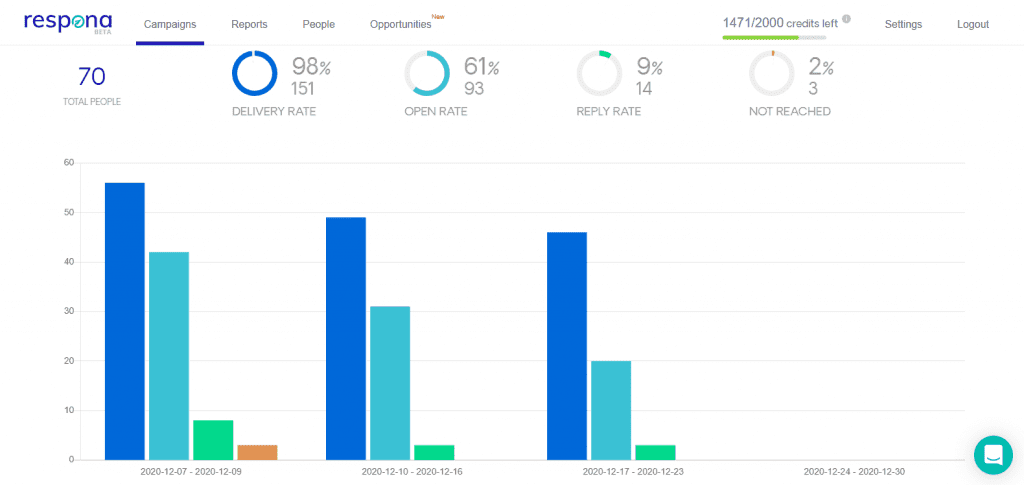

Depending on your PR tactics, the KPIs you should monitor will be different.
They could be podcast appearances, link placements, articles posted, webinars hosted, or any other PR activity that aligns with your goals.
Respona only measures outreach-based metrics, so you might have to resort to using Google Analytics.
If you want to learn more on how to measure the performance of your PR plan, we have a whole guide dedicated to that as well.
As a little bonus, we have also prepared 4 of the best PR tools useful for both marketers and public relations specialists.
These cover all of the main processes that PR involves, from prospecting and outreach to brand mentions and communication with journalists.
I already described how to use Respona for running a PR campaign, but it can be used for automating all kinds of outreach, be it marketing, public relations, sales, or even for press release distribution.
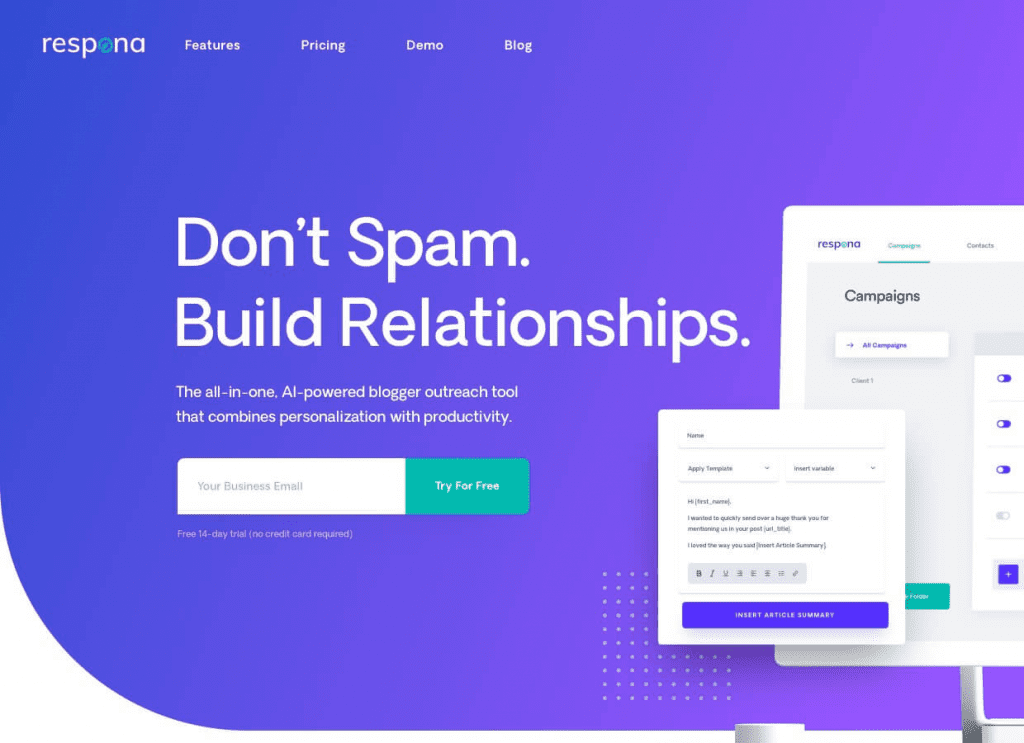

Encompassing all of the necessary functionality to do everything from prospecting to sending out automatic follow-ups without having to use any other outreach or email finding tool, it will be of great help to everybody dealing with outreach.
I also already spoke about Ahrefs, but I didn’t mention its Alerts functionality.
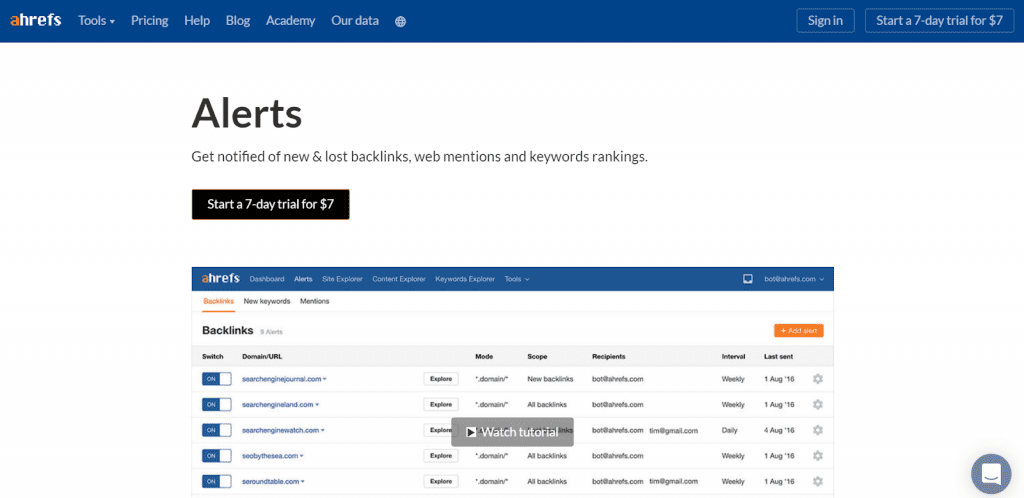

Ahrefs Alerts is great for tracking mentions of your keyword, and, more specifically, your own brand.
You can set the frequency at which it crawls the web for mentions, and have daily, weekly, bi-weekly, or monthly alerts delivered directly to your inbox.
These reports are extremely helpful for prospecting, and by checking them from time to time, you will reveal some amazing PR opportunities.
HARO, or Help A Reporter Out is an awesome online platform useful for both journalists looking for expert insights and opinions to include in their upcoming articles, and for sources looking to get media coverage.


After you sign up and choose the topics you’re knowledgeable about, you will start receiving pitches from journalists in your inbox three times a day.
Reply to those pitches, and you have a chance to get featured in other people’s articles once they finish writing them.
But did you know that Respona is actually integrated with HARO?
You can set up an automation within Respona to automatically filter out expired pitches or ones from anonymous sources.
You can also set up your own bio to automatically be inserted into each HARO pitch so you don’t have to do it manually.
Another benefit of this integration is the fact that you will be able to manage HARO from within Respona’s interface without having to sift through endless lists of pitches in your inbox.
Here’s how it works:
To set up a HARO automation, go to the “Opportunities” tab, click on “HARO”, and hit the plus sign to add a new automation.
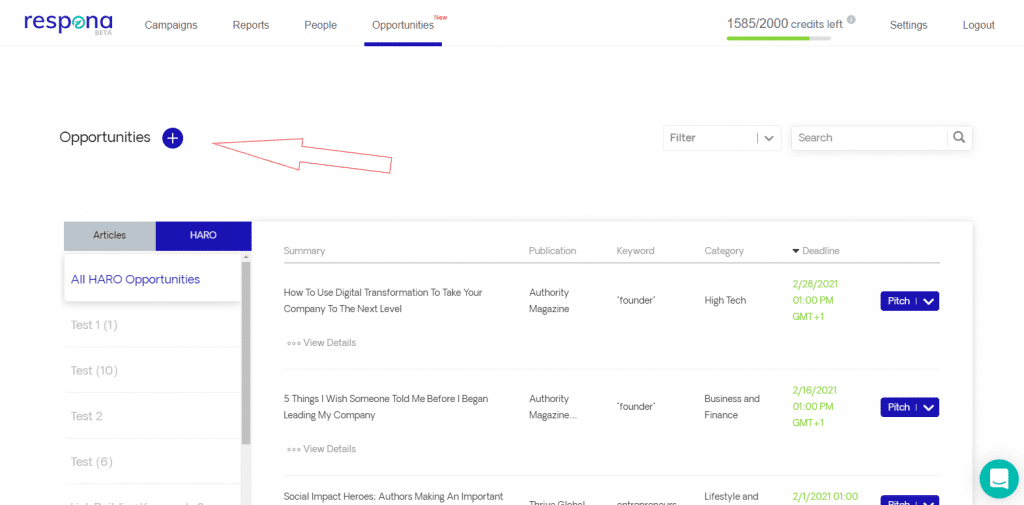

Name your automation, and choose the email address which your pitch replies will be sent out from.
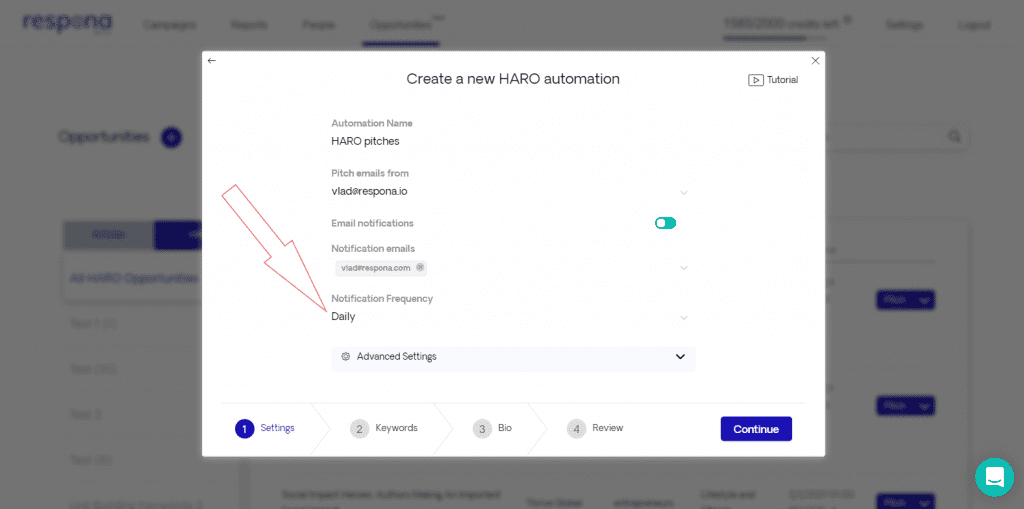

You may also choose to turn HARO notifications on or off, and even assign a separate email address to send them to.
You can change the notification frequency to three times a day, daily, or every other day.
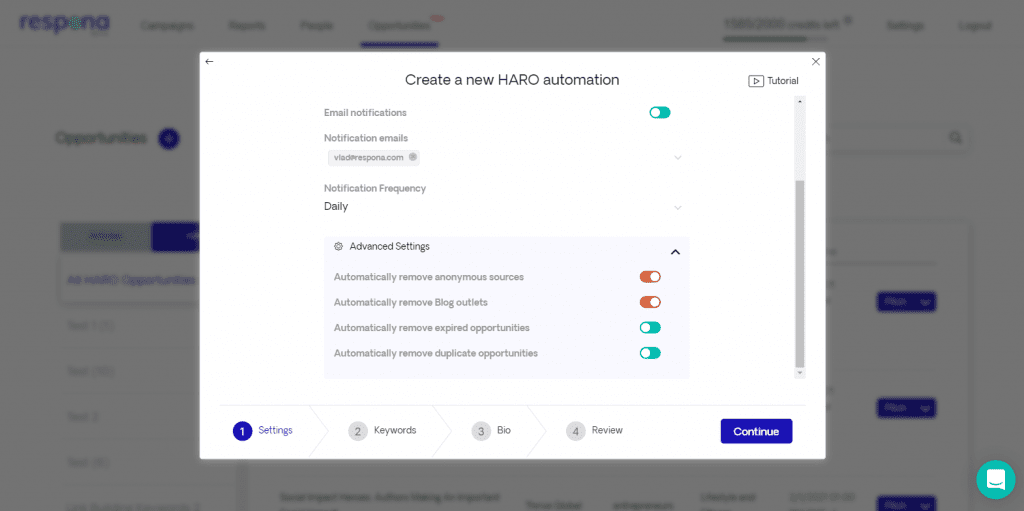

There are also four advanced options, all of which are quite self-explanatory.
Click “Continue” after you’ve set them up.
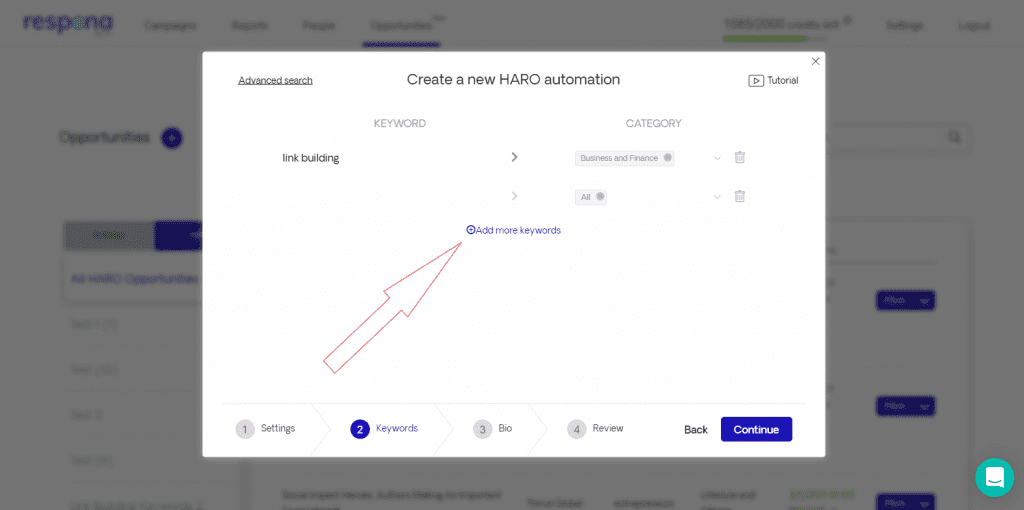

On this page, you may add up to 5 keywords to keep track of, and choose the categories they belong to (health, education, business, etc.).
This way, you will only get pitches that are actually relevant to your area of expertise.
This is very helpful since HARO’s official system only allows you to select the category, without the possibility to narrow down the range of pitches you will be getting with keywords.
It will save you the trouble of going through hundreds of pitches that have nothing to do with your business.
The last step would be to add in your bio information. Click “Continue” after you’ve set up your keywords.


All of the information you write in on this page will be automatically added to each HARO pitch you send so that the articles’ authors can credit you fully.
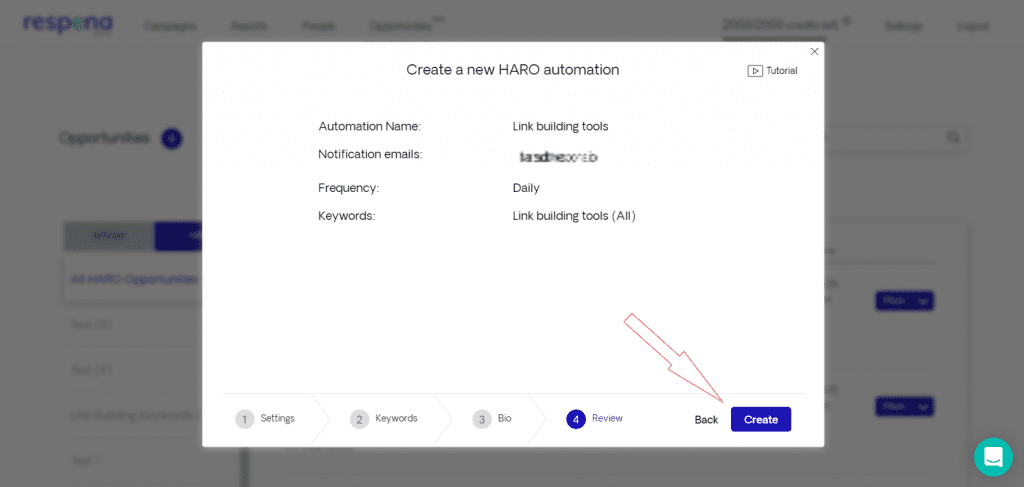

Review the automation, and hit “Create” to launch it.
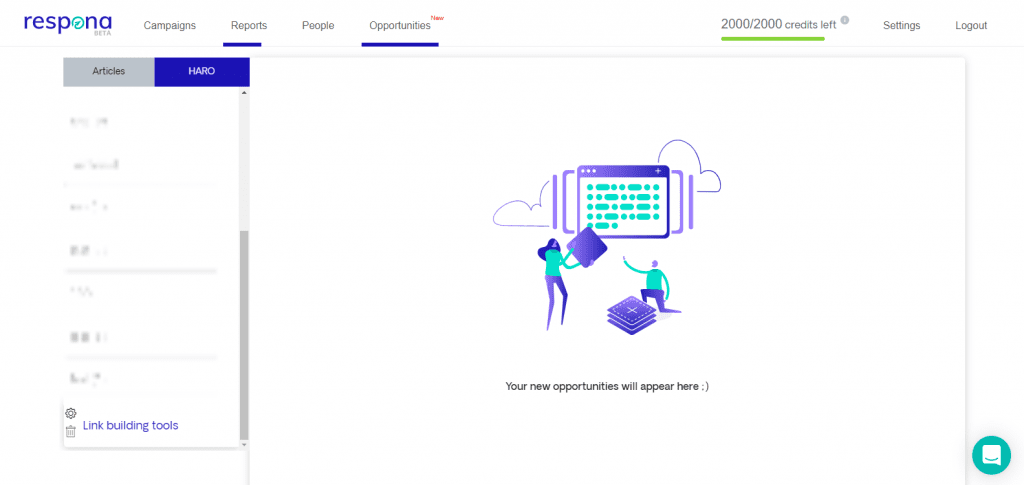

Depending on the frequency you’ve set, your relevant pitches will appear here either every other day, every day, or three times a day.
This is also where you can reply to them, without the need to ever go to your inbox, or HARO’s website.
And while SparkToro can primarily be used for content marketing or influencer marketing, the tool can undeniably be useful for public relations purposes as well.


It is one of the best and most functional tools for market research and audience intelligence, and it also provides the most accurate and relevant data.
With it, you can conduct searches to identify audiences based on their online activities, and easily create lists of media contacts to connect and reach out to.
Built by Rand Fishkin, the founder of Moz, it needs no introduction as it is simply a tool with no alternatives.
So, there you have it.
You now have the foundation for developing a successful PR strategy for your business.
We hope that the five steps outlined above will help you launch PR campaigns that will get you the attention you need.
If you’re ready to start with your digital PR strategy, don’t forget to take a look at Respona.
Our public relations tool is used by many startup companies trying to get PR coverage and raise awareness for their brand.
Just ask for access to a demo and we’ll be glad to show you what Respona can do for you.
No spam, no BS, unsubscribe at any time.